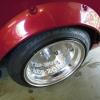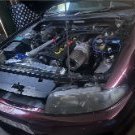Disadvantages Of Wolf 3d Ecu's?
Announcements
-
Similar Content
-
Latest Posts
-
Update time! The JZX110 had some maintenance needing to be done, so a lot of the seals with replaced to fix some oil leaks. Also used this opportunity to whack on a front mount that I'd bought some time ago. I also finally got the rear lip painted and fitted. I then got the exhaust done. It's just a catback for now. Custom made 3" stainless with a turn down. I could have a tip coming out, but it will require cutting the rear lip and possibly the bumper itself. So far I do like and it's made the car a little more zippy. Close out with some nice pictures of the cars and a sneak peek of what's next.
-
Once you learn it all, you find you do the job once. But this is the best way to learn, as you won't forget the lessons
-
Edit: It's now known as "R Performance" and is still in operation.
-
This lady loved her FD for 25 years! https://www.topspeed.com/80-year-old-woman-donates-fd-rx-7-mazda/ My brother in law. He's nice enough to let me drive it whenever. He'll likely not see this, but I'll try: @r-is-for-fun got any pics?








Recommended Posts
Create an account or sign in to comment
You need to be a member in order to leave a comment
Create an account
Sign up for a new account in our community. It's easy!
Register a new accountSign in
Already have an account? Sign in here.
Sign In Now